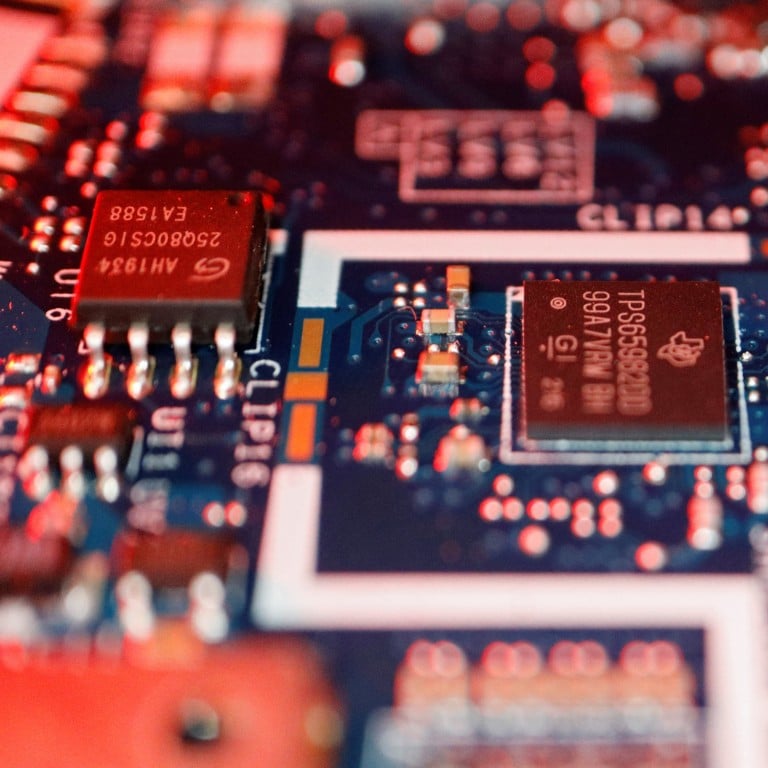
China’s semiconductor output jumps 40% in first quarter amid growing dominance in legacy chips
- The output has soared thanks partly to strong demand from downstream sectors, such as new energy vehicles and smartphones
- US exports control could unintentionally lead to a Chinese dominance of global legacy-chip production, researchers say
China’s total integrated circuit (IC) output surged 40 per cent to 98.1 billion units in the first quarter, a sign that the country is expanding its production of older-generation chips while being constrained by US trade restrictions on advanced chip-making equipment.
National IC output jumped 28.4 per cent to 36.2 billion units in March alone, reaching an all-time high, according to the latest data released by the National Bureau of Statistics (NBS) on Tuesday.
The government agency said China’s “hi-tech manufacturing has grown faster”. The country’s IC production is set to rebound strongly this year as “the semiconductor industry overall is becoming more localised”, Haitong Securities said in a report last week.
China’s IC output has risen sharply thanks partly to strong demand from downstream sectors, such as new energy vehicles. Government data showed that the country’s new-energy-vehicle output in the first quarter rose 29.2 per cent to 2.08 million vehicles. Smartphone output expanded 16.7 per cent during the same period.

China has expanded its IC production capacity in recent years, with output in the first three months of this year almost tripling from the same quarter in 2019, as semiconductor manufacturing facilities mushroomed across the country.
Under a US embargo on shipments of advanced chip technologies to China, most new Chinese investments have been concentrated on mature semiconductors, according to a report published by the Centre for Strategic and International Studies, a Washington-based think tank.
“An unintended consequence of US export controls on advanced chip technology to China may be a wave of state-backed investment leading to overproduction and, potentially, Chinese dominance of global legacy-chip production,” researchers wrote.
China has been doubling down on its efforts to achieve self-reliance in core technologies.
Its drive to phase out foreign operating systems in military and state organs has been going on for years, and has recently gained momentum with the state-led Xinchuang campaign, which aims to develop local alternatives to replace foreign chips, systems, databases and software.
China pushes forward self-reliance campaign amid unrelenting US sanctions
Beijing aims to have the Chinese tech sector reach an annual output of 100 billion yuan (US$13.9 billion) next year.
Despite China’s self-sufficiency campaign, the country remains heavily dependent on chip imports. IC imports grew 12.7 per cent to 121.5 billion units in the first quarter, while IC exports edged up 3 per cent to 62.4 billion units, according to data released last week by the General Administration of Customs.
Additional reporting by Che Pan

